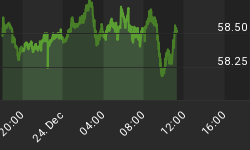Reader Mel writes ...
Hello Mish
I really enjoy your blog. You provide a very interesting viewpoint. One question: I have seen an analysis based on the old Sears catalogs of 30-50 years that shows how much more an average income can buy today versus 30-50 years ago based on actual prices in the catalog. It is very convincing. Do you think that is a valid approach or not?
Keep up the good work,
Mel
Hello Mel
I cannot comment on the catalog because I have not seen it. However, I will suggest that many such comparisons that I have seen are invalid.
For example, I have seen reports comparing home prices and car prices today vs. the average house or car in 1920. But how valid is such an approach?
I suggest, not very. For example ...
- How much house did you get in 1920 vs. today?
- Did it have dual pane energy efficient windows? Appliances? Carpet? Cabinets?
- How much electronics was in a car 50 years ago?
Would you even want to drive a 1920's car today? Legally, you probably couldn't, for safety reasons. Thus, all such comparisons are totally invalid.
Easy Comparisons
Food and energy costs can easily be compared.
I happen to know food prices exceptionally well. I worked in a grocery store as the night-manager for several years in high school and college.
I recall sales prices best because the meat manager was always bitching about how much money he was losing on them.
In 1969, whole chickens on sale were a loss leader at $0.21 per pound. I had farmers come into the store buying them, telling me they could not raise them for that price.
Flash forward to today: Whole chickens are on sale occasion for as low as $0.59 per pound (and I have seen $0.49). But let's be safe and assume today's sale price is $.69.
The price more than tripled, but over 45 years.
Similarly, a 1-poind loaf of generic white bread was something like $0.18. What is that today? I do not buy generic white bread, but a 1-pound whole-grain fresh artisan loaf is something like $2.69 not on sale.
Let's now compute the annualized rate of inflation using a Compound Annual Growth Rate Calculator.
Here is the result ....
Annualized Inflation - Chicken

Annualized Inflation - Bread

My bread example is very unfairly biased on the inflation side. Yet even so, the annualized rate of inflation is not through the roof.
Annualized Inflation - Gasoline
Gasoline is also an easy comparison. Other than a few additives, not much has changed over the years.
Please consider a chart from Inflation Data.

If one goes back to 1918, the annualized rate of inflation is about 2.84%. Instead, let's cherry-pick a starting point of $0.50 in 1974. Here is the result.

If I use 1981 as a starting point the result looks like this:

Clearly the starting point matters greatly. One can easily cherry-pick starting points on any item to suit whatever story they want to tell.
Government Manipulation
Prices are most distorted where there has been the most government interference. The standouts are health care, education, and housing.
How many "affordable home" programs did Congress sponsor? What was the result? How much government interference in health-care is there? What is the result? How many student aid programs do we have? And what is the result of that?
Calculating health-care costs is problematic, but tuition is easy.
Annualized Inflation - Tuition
I recall that University of Illinois tuition for an engineering degree was on the order of $250 per semester ($500 per year) my freshman year in Autumn 1971.
The preceding link shows in-state engineering tuition is now $16,556. And here is the result.

One can go through all sorts of calculations like this. However, it's important to make sure the comparisons are valid (unlike my bread example). It's also important to use the same starting year for all of the calculations (something I did not do because I do not know historical prices for all of the items I mentioned for every year).
I suggest that a few simple calculations like this are all it takes to dispel some wildly popular cult-CPI calculations from hyperinflationists who claim CPI inflation has been 8-13% per year since 1997.
Consumer Prices Poor Measure of Inflation
Regardless of which CPI-variant you believe is accurate, consumer prices are an extremely poor measure of inflation for several reasons.
- There is no such thing as a standard basket of goods and services that pertains to everyone
- Prices of many items cannot be accurately measured because technology changes over time. For example, many medical procedures in place today did not exist 10 years ago. And what about such things as dual-pane argon-gas-filled UV-protection glass windows (now common-place in homes)? How long ago was it when such a thing was not available at any price? What was the price of a cell phone in 1962?
- Consumer price inflation completely ignores asset bubbles, and asset bubbles are the most common result of monetary printing. The housing bubble and the dot-com bubbles are proof enough. Housing is not even in the CPI, although rent is.
So how can one calculate true price-inflation?
The answer is: It's impossible. More importantly, it's an invalid measure of inflation, even if one could accurately measure prices. But that does not stop people from trying.
For further inflation reading and who benefits from it, please see ...
- Illusion of Prosperity: Deflating the American Dream; No Recovery in "Real" Income
- Reader Asks Me to Prove "Inflation Benefits the Wealthy" (At the Expense of Everyone Else)
- The Morning After; Price Discovery is Zero; PUT on the Bond Market? Is Inflation Really Under 2%?
- Does Inflation Targeting Make Any Sense?
- Inflation Targeting Revisited; Three Major Fed-Sponsored Bubbles; Who Benefits From Inflation?
















